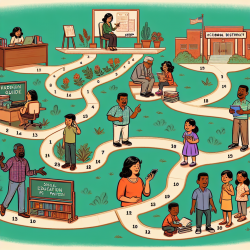Special education is governed by numerous processes and procedures designed to provide your student with an appropriate educational program. You do not need to become an expert in all areas of special education to be a good educational advocate for your student. Having a firm understanding of the basic special education processes and procedures, however, will help you navigate each step along the way. The following is an overview of 10 important steps in the special education processes that mark the progression of every student’s special education program. This list is not comprehensive; it serves as a guide to helping you understand where you might be in the process and what procedures may be applicable.
Step 1: Referral
A referral is made for your student to be evaluated for special education. If you suspect that your student may need services, then you can make a referral to the school district to have your student evaluated for special education. A referral for an evaluation must be in writing. The district also has a “child find” responsibility to identify, locate, and evaluate all students within the district who need special education. Parents, school personnel, school district staff, or other persons with knowledge about the student may make a referral for an evaluation as well. Once any referral is made, the district must decide if your student will be evaluated for special education.
Step 2: Consent to Evaluate
The school district decides to evaluate your student for special education and obtains your consent. The school district has 25 school days to decide, with your input, whether or not to evaluate your student. Once a district decides to evaluate your student, the district will notify you of the evaluations it intends to conduct. The district must obtain your informed consent before conducting the initial evaluation.
Step 3: Initial Evaluation
Your student is evaluated for special education. After obtaining your informed written consent, the district may proceed with its initial evaluation. The evaluation process must be completed within 35 school days after the district receives your consent. The evaluation must be comprehensive and must address all areas of a suspected disability, including those areas which may or may not be directly related to the suspected eligibility category included in the referral.
Step 4: Initial Evaluation Report
Your student’s eligibility for special education is discussed. You and a group of qualified professionals selected by the district meet to review your student’s initial evaluation report. The initial evaluation report consists of results from all of the assessments conducted, the information gathered from reviewing existing records and data maintained by the district, and any additional information you may have provided. You and the district's evaluation group discuss the results of the initial evaluation report and make a determination about your student’s eligibility.
Step 5: Eligibility and Consent
Your student is found to be eligible for special education services. If it is determined that your student has a disability and needs special education services, then your student will be eligible for special education. Your student’s special education and any related services will not start, however, until you give consent for special education to begin. Once you give consent, the district will formulate a team to begin working on creating an Individualized Education Program (IEP) for your student.
Step 6: Creating an Individualized Education Program (IEP)
An IEP Team meeting is held and an IEP is written. Once your student is found eligible for special education services, an IEP Team will meet within 30 days to write an IEP for your student. You, as a parent or guardian, are included as a member of the IEP Team. The IEP Team uses the information previously gathered from the initial evaluation to talk about your student’s needs, write the IEP, and decide upon the appropriate placement for implementing the IEP.
Step 7: Special Education Begins
The school district implements your student’s IEP. The services identified in your student's initial IEP should be made available as soon as possible after the IEP Team develops an IEP. You will receive a copy of the IEP. Each of your student’s teachers and service providers will also have access to the IEP and know their specific responsibilities for carrying out the IEP. These responsibilities include any of the accommodations, modifications, and supports identified in your student’s program.
Step 8: Progress Monitoring & Annual IEP Review
Your student’s progress is measured throughout the year, an annual IEP meeting is held, and the IEP is updated. The IEP Team is required to meet, at least once a year, to review your student’s progress and update the goals and services that make up her/his individualized program. As a member of the IEP Team, you are invited to participate in the annual IEP Team meeting and can make suggestions for changes to the IEP for the upcoming year.
Step 9: Reevaluation
Your student is reevaluated. Your student is reevaluated, at least every three years, to determine if s/he continues to need special education services. A reevaluation may occur sooner, however, if your student’s needs change to the extent that the most current evaluations do not provide enough information for the IEP Team to revise the IEP.
Step 10: Transition
A transition plan is developed and included in your student’s IEP. By the time your student turns 16 years old, the IEP must have an appropriate transition plan in place for when your student will either graduate from high school or exceed the age requirements for special education. You and your student are invited to participate in the IEP Team meetings to create this transition plan, and together, can make suggestions for appropriate postsecondary goals and transition services. For more information, please follow this
link.
